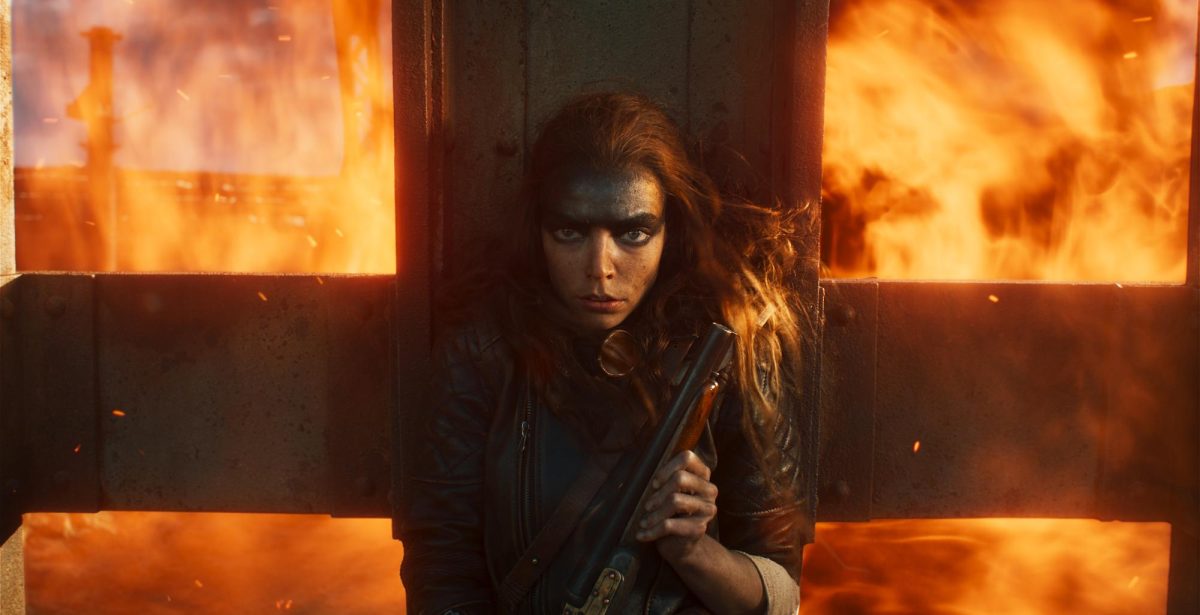While the series has always had its fans, essentially defining the iconic “post-apocalyptic” look for popular media, the “Mad Max” franchise did not exit cult status until 2015’s “Mad Max: Fury Road.” The bombastic action flick took audiences by storm, throwing them in the center of a brutal, high-speed road war fueled by adrenaline and violence. It was a spectacle unlike any most people had ever seen before. The movie also introduced the world to an instantly iconic action hero in Charlize Theron’s Furiosa.
Before even a single frame of “Fury Road” had been shot, director George Miller had written a script for a standalone Furiosa film detailing her life and path to the 2015 movie. After almost a decade, that script has finally made it to the screen with “Furiosa: A Mad Max Saga.”
Starring Anya Taylor-Joy and Chris Hemsworth, “Furiosa: A Mad Max Saga” chronicles the history of the titular wasteland warrior as she seeks vengeance against the cruel gang leader who kidnapped her as a child.
A Road Less Linear
In stark contrast to the non-stop, heart-pounding pace of “Fury Road,” “Furiosa” takes a slower approach to its narrative. Since the film covers years or possibly decades of time, the story lingers on moments throughout Furiosa’s life, letting the feelings of her many struggles sink in. While this makes each chaptered segment of the film emotionally resonate within its own confines, all together it makes for a film that lacks a base dramatic pull.
Watching Furiosa be stolen from her family and forced to be a pet for a merciless motorcycle cult, the viewer understands the anger and turmoil she is experiencing. However, the character’s driving goals and intentions change frequently, leaving a hollowness where there should be a deep longing to see Furiosa escape her hellish situations.
It is also difficult to get fully invested within the tense scenarios Furiosa finds herself in given the film is a prequel. Knowing the character ends up in “Fury Road,” we know she is going to survive as she perilously climbs over a flaming weaponized gas rig being attacked by road pirates. While the action scene itself is well put together and shot with passion, a sense of danger is missing.
If Furiosa’s revenge mission was displayed more as the driving force behind the entire narrative, greater tension could be found within each action sequence as it brings her further or closer to her end goal. Yet, the film seems to be far more interested in telling a sprawling epic rather than a contained story.
Beautiful Chaos
Narrative issues aside, “Furiosa: A Mad Max Saga” is still a hell of a good time at the theater. It’s hard not to grin at the bonkers madness of the wasteland. Whether it’s the carriage pulled by motorcycles, the paragliding bomber men or the blood-soaked capes of power, an undeniable charm lies in the twisted details of the “Mad Max” universe.
While some less-than-believable effects pop up throughout, for the most part, Miller stays loyal to the outstanding practical stunts that built the franchise into what it is today. While the action may not have the visceral intensity found in “Fury Road,” it’s still crafted better than 90% of the action seen in most modern blockbusters. Each set piece is formed with fluid chaos, lulling the audience into a fiery trance. The standout sequence is the war rig attack described earlier, though the film’s opening and closing chases are equally entertaining despite being surprisingly simplistic.
While Taylor-Joy slips easily into the role of Furiosa, the standouts are Hemsworth as the main villain Dr. Dementus and Alyla Browne as a young Furiosa. While he still lets his doofus flag fly, Hemsworth as Dementus is wickedly fun to watch playing the opposite of the lovable himbo Thor we’ve come to know him as. With an unfounded ego and an explosive temper, Dementus steals every scene he’s in despite being surrounded by an overwhelming amount of strange visuals.
Browne translates Furiosa’s tragically stolen childhood all through facial expression. As more and more of her soul and being are taken by the monsters around her, an upsetting emptiness takes Browne’s eyes. Trauma like this is typically only seen in war-beaten characters who have lost all hope, so Browne’s ability to perform this is astonishing.
A Machine Old and New
“Furiosa: A Mad Max Saga” feels like a car with the shell of “Fury Road” but with the internals of the original 1979 “Mad Max.” While its slower pace can be at times taxing and lets the film meander a bit too much, it allows the cruelty of the wasteland to permeate the screen. The acts of violence often feel truly mean-spirited and shocking, something that is lost in the mayhem of “Fury Road.” While a stronger sense of direction could have made for a cleaner overall package, cleanliness has never been the forte of the “Mad Max” franchise. “Furiosa: A Mad Max Saga” has all the parts required for another exciting excursion to the beautiful horrors of the wasteland.



